Building materials, well-being and sustainability
Healthy building materials have minimal negative impacts on human health and the environment throughout their lifecycle, from production and installation to use and disposal. These materials are chosen to promote indoor air quality, reduce exposure to toxins, and contribute to overall well-being.
The concept is tightly connected to sustainability, thus many details that are mentioned below have nothing to do directly with the home owner’s health, but do influence the society’s general health and well-being as a wider concept. For example, there is no direct health impact of concrete foundation, but it has a generally higher environmental impact than e.g. screw piles.
The examples in this article consider individual health concerns and overall sustainability separately.
Individual well-being and structural design decisions
Structural elements are difficult to see, but how they are designed and which materials are chosen to build them makes a lot of difference from the health and well-being perspectives.
Biophilic design
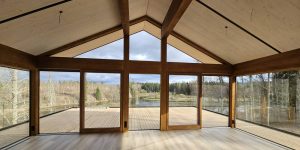
Wood is an excellent structure bearing material that offers a warm and natural aesthetic that influences mental well-being.
Sound

Roofing structures needs to be well built and isolated to offer good sound proofing. The materials for exterior as well as interior walls should have the highest possible quality.
Light
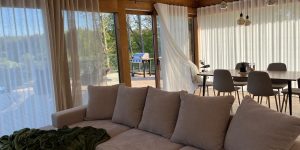
Glass offers transparency, openness, natural light and connection to the nature that influences mental well being.
Individual well-being and interior design decisions
Interior design elements’ influence on health mostly deals with air quality and has a direct influence on physical health.
Finishings
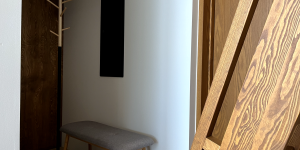
Volatile Organic Compounds (VOCs) are chemicals that can be emitted by paints and finishes, leading to indoor air pollution. Make sure the finishes are VOC free for wooden doors, flooring, furniture. Clay plaster or VOC free paints for walls.
Natural fabrics

Choose textiles made from natural fibres like cotton, linen, hemp, or wool or certified Low-VOC fabrics. These materials are less likely to off-gas harmful chemicals and provide a healthier indoor air quality. Sofas, beds, carpets.
Wooden furniture
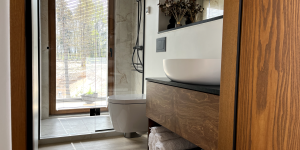
Particle board is a popular choice for furniture as it is cheap. Bear in mind to get either VOC free particle board furniture or make it safe and go for wooden as particle board is difficult to fix if it breaks.
Insulation
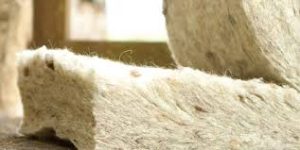
Materials like wool, cellulose, and natural fibres should be used for insulation, reducing the need for synthetic materials that may release harmful substances.
Secondary materials
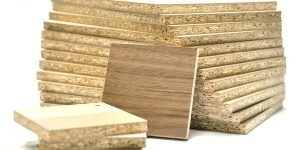
OSB and other particle boards are cheap, easy and effective to use for many different building elements. Having said that, when they are used, make sure to choose formaldehyde-free.
Technology

A good ventilation system, heating/cooling system and smart house that monitors the living environment will make a difference for air quality.
Sustainability and structural design decisions
Bearing structures
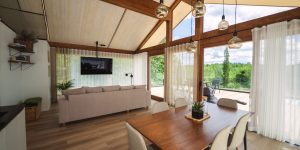
Wood has low environmental impact as a bearing structure and it has natural insulating properties, helping to regulate indoor temperatures and reduce the need for additional insulation.
Design/deconstruction

Design for deconstruction is important for future-proofing the house. In addition, it helps maintaining the house in the long term (e.g. easy to change electric and plumbing elements).
Low-Impact foundations

Screw piles have a smaller environmental footprint compared to traditional concrete foundations.
Sustainability and interior design decisions
Local materials

Interior design elements should be bought from local producers, if possible. Importantly, the materials and design elements should come from locally sourced raw materials.
Pre-fabrication
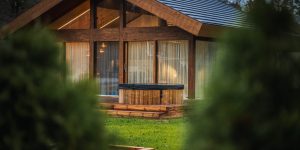
Minimal material waste is the key for a more sustainable economy. CNC cutting, no-waste building for pre-fabricated materials and elements allow new buildings to have minimal waste.
High quality
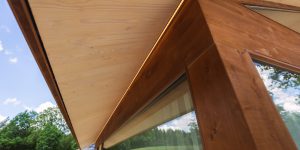
The most sustainable choices are those that are of high quality as the life-span of high quality materials is considerably higher. It also tends to happen that better materials have less waste (defective or broken products).

